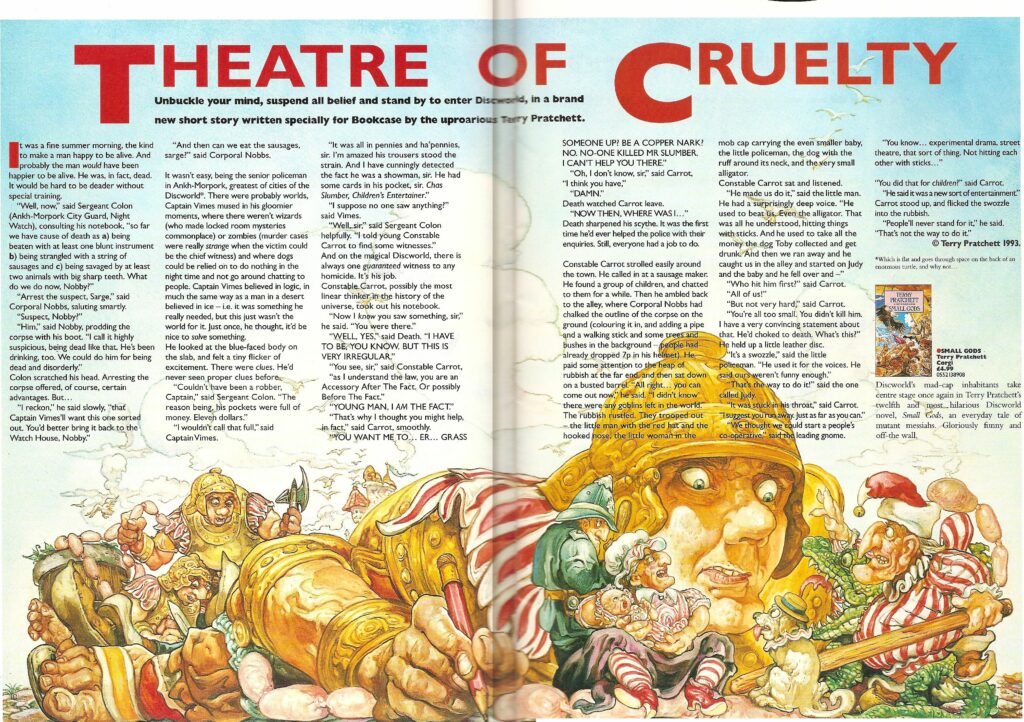#Pratchat1 – Boots Theory
In our first full-length episode, Elizabeth and Ben are joined by comedian Cal Wilson to discuss the winner of our poll – Terry Pratchett’s 1993 novel Men at Arms! The fifteenth Discworld novel, Men at Arms is the second to focus on the Ankh-Morpork City Watch, following Guards! Guards!
Samuel Vimes, Captain of the Ankh-Morpork Night Watch, is only a week away from marriage and retirement. So of course “ethnic tensions” between dwarfs and trolls are at boiling point, something explodes in the Assassin’s Guild, and there’s a murderer on the loose – a murderer who uses a mysterious and uniquely deadly weapon… Luckily the Watch has expanded, taking on three unorthodox new recruits. But will they be enough to stop war in the streets, and catch a murderer who can kill from a distance?
Men at Arms is a real smorgasbord of Discworld stuff, and a great introduction to the world – especially the quintessential Discworld city of Ankh-Morpork. It’s also a fun howdunit (i.e. we know who, just not how they’ll be identified and caught), has one of the best (and most tragic) friendships in the series, introduces (if clumsily) one of Pratchett’s favourite romances, and carries a message about the dangers of killing machines which sadly hasn’t got any less relevant in the last quarter of a century.
Do you agree this is great place to start? Is it the best Watch book, or at least up there? Was Pratchett ahead of his time in how he handled the issues in the book, and would he have done it differently if he’d been writing now? We want to hear from you! Use the hashtag #Pratchat1 on social media if you want to comment on our discussion here.
Podcast: Play in new window | Download (Duration: 1:27:12 — 85.5MB)
Guest Cal Wilson (she/her) was a Melbourne-based New Zealand stand-up comedian and author. The children’s book she couldn’t name at the time is George and the Great Bum Stampede, illustrated by Sarah Davis and published by Scholastic. It’s the first in a series about George’s family, the Peppertons. Cal passed away unexpectedly after a brief illness in October 2023; she is sorely missed. GNU Cal Wilson.
You can find the full show notes and errata for this episode on our web site.
Want to help us get to the end of our six(ish) year mission and read every Pratchett book – and more? You can support us with a tip, or a subscription for as little as $2 a month, and that’s cuttin’ our own throats! See our Support Us page for details.

